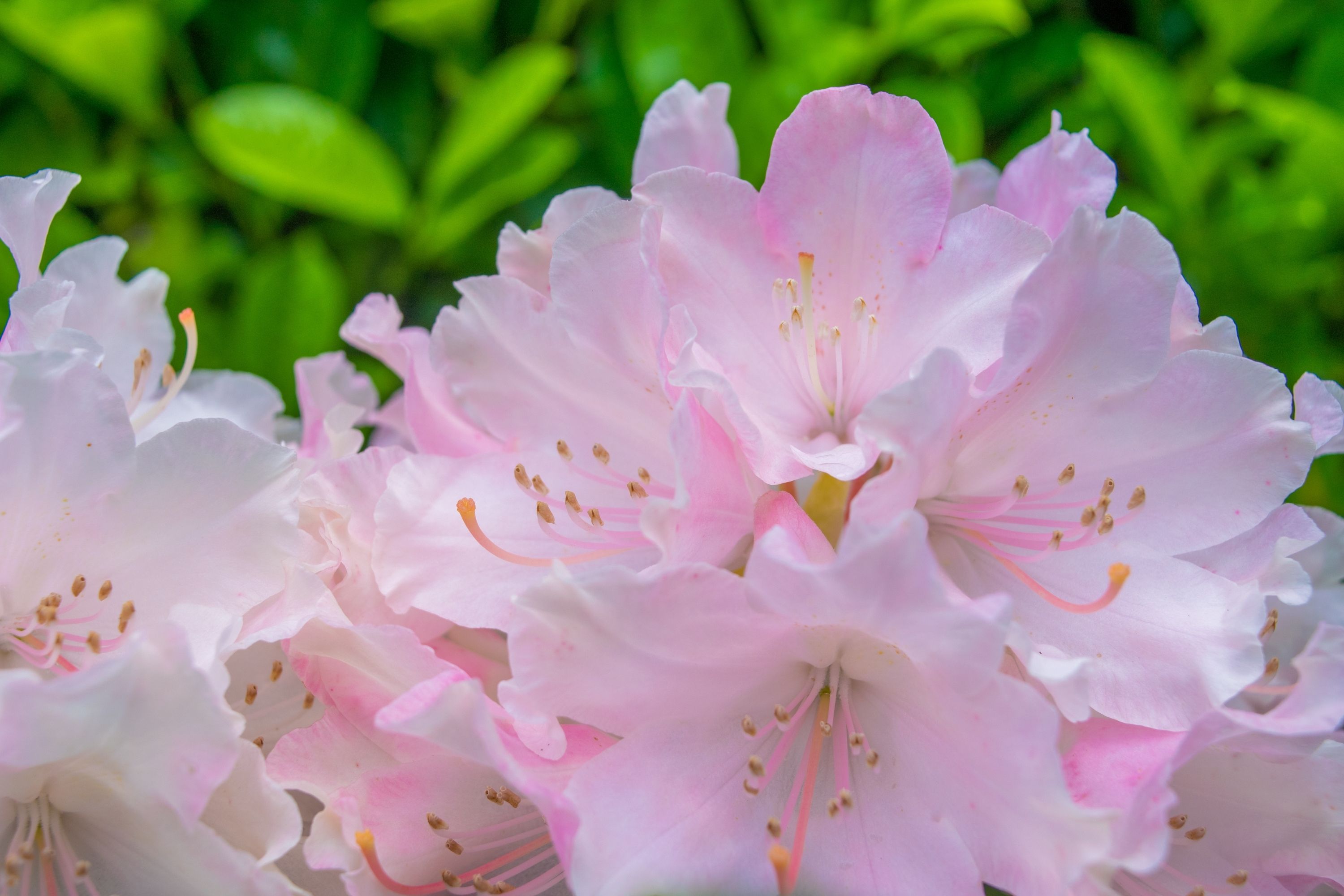Maries's rhododendron
(Rhododendron mariesii)

Description
Rhododendron mariesii, commonly known as Maries's rhododendron, is a captivating species belonging to the Rhododendron genus. Revered for its stunning flowers and ornamental value, this deciduous shrub has gained popularity among gardeners and plant enthusiasts around the world. Named after the notable plant collector Charles Maries, this species showcases an array of delightful characteristics that make it a cherished addition to any landscape. In this article, we will delve into the various aspects of Rhododendron mariesii, including its taxonomy, distribution, morphology, cultural requirements, and significance in horticulture. Taxonomy and Nomenclature Rhododendron mariesii is a member of the Ericaceae family, which includes a diverse range of flowering plants. This species was first identified and named by the renowned botanist and plant collector Charles Maries in the late 19th century during his travels in China. The genus Rhododendron comprises over 1,000 species, making it one of the largest genera of flowering plants. Within the genus, Rhododendron mariesii is classified under the subgenus Tsutsusi and section Pentanthera. Distribution and Habitat The native range of Rhododendron mariesii is primarily restricted to the mountainous regions of central and southwestern China. It can be found in provinces such as Sichuan, Yunnan, and Guizhou, where it thrives in the understory of mixed forests at elevations between 2,000 and 3,500 meters (6,500 to 11,500 feet) above sea level. The species typically grows on well-drained acidic soils with high organic content, and it is often associated with other rhododendron species and diverse understory flora. Morphological Features Rhododendron mariesii displays a distinctive and eye-catching appearance. It is a deciduous shrub that typically reaches a height of 1 to 2 meters (3 to 6.5 feet) with a slightly wider spread. The branches are slender, and the overall form is compact and well-branched. The leaves are lanceolate or elliptic in shape, measuring around 5 to 10 centimeters (2 to 4 inches) in length. They are a lustrous dark green on the upper surface and have a silvery-white indumentum on the lower surface. One of the most captivating features of Rhododendron mariesii is its flowers. Blooming in late spring or early summer, the inflorescences are terminal and comprise 4 to 8 flowers each. The flowers themselves are trumpet-shaped and consist of five spreading lobes. They are typically a delicate shade of pink, sometimes with darker spots or blotches. The stamens and pistil protrude prominently from the flower, adding to its aesthetic allure. The blossoms of Rhododendron mariesii are not only visually stunning but also emit a mild, pleasant fragrance. Cultural Requirements and Growing Tips To successfully cultivate Rhododendron mariesii, it is essential to provide it with the proper growing conditions. This species thrives in partial shade or dappled sunlight, as direct exposure to intense sunlight can scorch the leaves and hinder flower development. The soil should be well-drained, acidic, and rich in organic matter. It is advisable to amend the soil with organic materials such as peat moss or compost before planting. Regular watering is crucial, especially during dry spells or when the plant is establishing its root system to ensure proper growth and flowering. However, it is important to avoid waterlogged conditions, as excessive moisture can lead to root rot. Applying a layer of organic mulch around the base of the plant helps to conserve moisture, suppress weeds, and maintain a cool root environment. Pruning is another important aspect of Rhododendron mariesii care. It is generally recommended to prune the shrub immediately after flowering to maintain its shape and encourage bushier growth. Deadheading, or the removal of spent flowers, can also promote a tidier appearance and redirect the plant's energy towards new growth. Fertilization should be carried out judiciously, using a balanced acidic fertilizer specifically formulated for rhododendrons. It is best to follow the manufacturer's instructions and avoid overfertilization, as excessive nutrients can lead to weak growth or foliage burn. Regularly monitoring the pH level of the soil is beneficial, aiming for a range of 4.5 to 6.0 to ensure optimal nutrient uptake. Significance in Horticulture Rhododendron mariesii holds great significance in horticulture, both for its inherent beauty and its role in hybridization. Its elegant flowers and attractive foliage make it a sought-after addition to gardens, parks, and arboretums. The species is often planted as a specimen shrub or incorporated into mixed shrub borders, where its vibrant blooms serve as a focal point. Its deciduous nature adds further interest to the landscape, as the changing foliage provides seasonal variation. Moreover, Rhododendron mariesii has been utilized extensively in hybridization efforts to create new cultivars with enhanced characteristics. Breeders have crossed it with other rhododendron species to introduce variations in flower color, shape, and size, as well as improved cold hardiness or disease resistance. These hybrid cultivars have expanded the range of options available to gardeners, allowing them to select plants that suit their specific preferences and growing conditions. Conservation In its native habitat, Rhododendron mariesii faces threats due to habitat loss, deforestation, and overcollection for ornamental purposes. As with many rhododendron species, it is imperative to protect and conserve the natural populations of Rhododendron mariesii to ensure its long-term survival. Initiatives such as habitat preservation, sustainable harvesting practices, and the establishment of protected areas are crucial for safeguarding the species and maintaining its genetic diversity. Conclusion Rhododendron mariesii, with its captivating flowers and graceful form, is an exquisite member of the Rhododendron genus. Its aesthetic appeal, combined with its ease of cultivation, has made it a popular choice among gardeners and plant enthusiasts. By providing the appropriate growing conditions and care, this stunning shrub can thrive and bring beauty to various landscapes. Moreover, the significance of Rhododendron mariesii in horticulture and its contribution to hybridization efforts underscore its importance as a valuable species. As we appreciate and cultivate this plant, let us also strive to conserve its natural habitats and ensure its preservation for future generations to enjoy.
Taxonomic tree:







